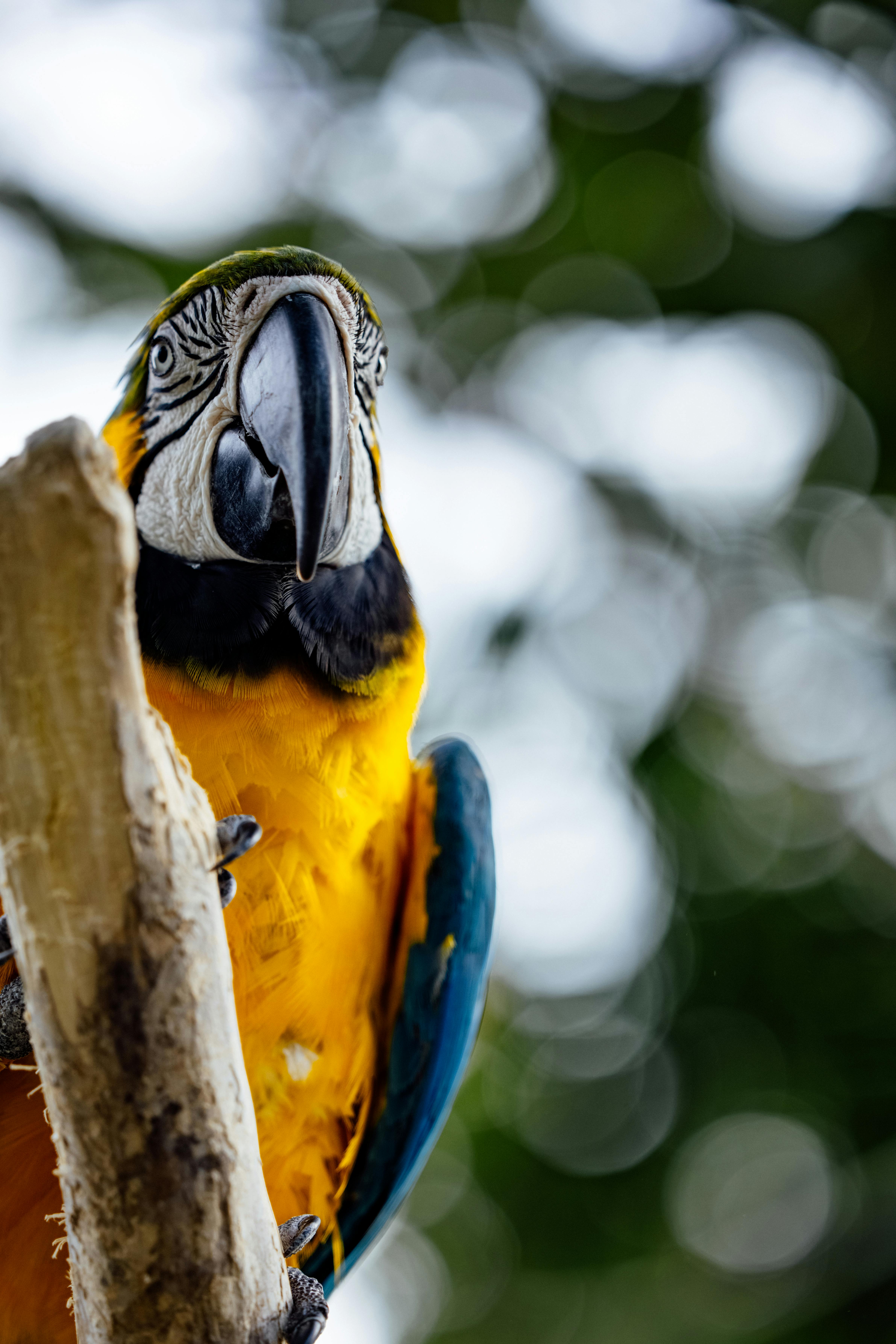Essential Guide to Hamster Care for Kids
Hamsters have become beloved pets for families around the globe. Their small size, gentle demeanor, and relatively low maintenance needs make them an ideal choice, particularly for children. This guide covers essential aspects of hamster care, from choosing the right breed to ensuring their habitat is safe and enjoyable. By understanding their behaviors and needs, a family can foster a loving and enriching environment for their new furry friends.
In this article, we will discuss various hamster breeds, necessary supplies, ideal habitats, and care tips to maintain optimal hamster health. Additionally, we'll provide insights into proper hamster training, socialization, and enrichment activities to boost your pet's happiness and longevity.
Throughout this journey, you will discover that hamsters can be delightful companions that create lasting memories for children and families alike. So let’s dive into the world of hamsters and explore how to provide the best care for these cute little pets.
Key takeaways include understanding behavioral traits, the importance of proper nutrition, and activities that promote a healthy and vibrant hamster life.
Choosing the Right Hamster Breed for Your Family
When considering which hamster to adopt, understanding the different hamster breeds is crucial. Each breed has unique traits that can influence compatibility with a family’s lifestyle. The most common pet hamsters include the Syrian, Dwarf Campbell Russian, Winter White, and Roborovski.
**Syrian hamsters** are usually friendly and solitary, requiring a spacious cage due to their larger size. In contrast, **Dwarf hamsters** are smaller and often exhibit a more sociable nature, making them suitable for children who are interested in handling their pets. Understanding the characteristics of each breed helps in making an informed decision.
To make a decision, consider the following factors: size, temperament, and interaction levels. Research shows that children may benefit from breeds that offer a greater range of social interaction. For instance, Dwarf hamsters tend to bond well with humans and can provide an interactive pet ownership experience.
Make sure to explore reputable sources for **hamsters for sale** and opt for adoption whenever possible. Check your local shelters or pet adoption sites to find a perfect furry companion.
Once you decide on the right breed, ensure to set up an accommodating **hamster habitat** that meets their needs. This leads us to the next critical aspect of hamster care: setting up a safe environment.
Setting Up the Perfect Hamster Habitat
Creating a well-designed hamster habitat ensures your pet feels secure and happy. It’s essential to choose a cage that provides ample space and ventilation to cater to the hamster's exercise needs. Ideal hamster environment setups include hiding places, tunnels, and a secure bedding choice like aspen or paper-based bedding to ensure comfort while eliminating odors.
As you prepare your hamster’s home, remember that **hamster cage requirements** can vary by breed. For instance, Syrian hamsters require a larger cage, ideally measuring at least 24 inches long. Make sure to include a **hamster wheel** and **hamster toys** to keep them active and engaged.
Moreover, maintaining the right temperature is vital for their health, as extreme temperatures can cause stress or illness in hamsters. Aim for a range of 65-75°F for optimal living conditions. Be mindful of ensuring the habitat is placed away from direct sunlight or drafts.
Each section within the habitat should promote exploration and play. Incorporating **hamster enrichment** items, such as tunnels, ramps, and chew toys, encourages natural behaviors and promotes mental health among these tiny pets.
Once your habitat is set up, transitioning to proper food and a nutrition plan ensures your hamster thrives. This naturally leads us to our next section on **hamster nutrition and feeding guidelines**.

Feeding Your Pet Hamster for Optimal Health
Understanding the **best hamster food** options is vital for ensuring a balanced diet. A typical hamster diet should include a variety of high-quality pellet food, fresh vegetables, fruits, and occasional treats. Special attention should be given to hazards such as certain fruits and vegetables which can upset a hamster's stomach.
Establishing a consistent **feeding schedule** is key to maintaining a healthy diet. Adult hamsters generally require about 1-2 tablespoons of food daily. It’s important to monitor their eating habits to gauge health and avoid obesity.
Hamsters also benefit from enriched diets, and incorporating **healthy hamster treats** can be an effective way to promote wellness and excitement. Be cautious not to overdo treats, as moderation is essential. Avoid sugary or fatty options, as they can lead to health issues.
Additionally, providing constant access to fresh water is crucial. Using a water bottle designed for small pets helps prevent spillage and keeps the habitat clean.
In summary, a **hamster diet plan**—rich in nutrients while being mindful of their unique needs—will promote your pet’s long-term health, giving them a vibrant and enjoyable life.
Engaging Activities to Enrich Your Hamster's Life
Engaging your hamster in **playtime** can improve their quality of life significantly. Hamsters display distinct behaviors when given opportunities for exploration and interaction. Providing a balance of **hamster enrichment activities** allows for both mental and physical stimulation.
Set aside time for supervised out-of-cage play sessions in a safe, enclosed area. Introduce **homemade hamster toys** or store-bought options to spark interest and curiosity. Simple items like cardboard boxes, paper towel rolls, and exercise balls can provide hours of fun and encourage healthy exercise habits.
To take it a step further, consider utilizing different sensory experiences. Introduce tunnels, climbing structures, and bedding with varied textures to enrich their habitats. **Hamster play areas** should allow for exploration while maintaining safety precautions, ensuring your pet is not exposed to any hazards.
Understanding your hamster’s **activity patterns** will help tailor activities to their preferences. Many hamsters enjoy running on exercise wheels during the evening when they are naturally more active. Monitoring their behavior can reveal individual likes and dislikes, leading to a more personalized care experience.
Structured **playtime scheduling** is essential to maintain consistency, allowing your pet to predict when exciting activities will occur. This establishes positive habits for both you and your hamster.

Common Health Care Tips for Hamsters
Understanding **hamster health** is key to a long, fulfilling relationship. Regular monitoring for **signs of illness** is essential, including changes in appetite, lethargy, or abnormal behavior. Establishing a relationship with a qualified veterinarian specializing in small pets is beneficial for ongoing health management.
Routine check-ups can help detect problems early. Ensure that **hamster grooming**—including dental care and nail trimming—is part of your regular routine. Keeping their environment clean with routine cage cleaning helps reduce the risk of illness.
Awareness of **common hamster diseases** can prepare families for quick action. Conditions like wet tail, respiratory illnesses, and tumors are some that can affect hamsters. Being informed about these can help catch health issues sooner.
Feeding the right diet contributes to general well-being. Make informed choices on **hamster supplies** that enhance exercise, mental stimulation, and overall enjoyment. Selecting appropriate bedding, chew toys, and supplements can lead to healthier and happier hamsters.
Finally, nurturing the emotional bond with your hamster through handling and social interaction is essential. Engaging in **hamster social behavior** promotes well-being and builds confidence, making them more comfortable with their families.
Conclusion and Q&A on Hamster Care
Providing proper care for your hamster offers various rewards for the entire family. Understanding the needs of your pet supports a healthy and enjoyable environment. Engaging in appropriate activities and observing signs of good health lead to a rewarding companionship.
In summary, remember to regularly check for the needs of your hamster, maintain a balanced diet, and include enrichment activities to enhance their life experience.
### Frequently Asked Questions
**1. How often should I clean my hamster's cage?**
Cleaning your hamster’s cage at least once a week is advisable. Remove any soiled bedding and refresh it regularly to maintain hygiene.
**2. Can hamsters live with other hamsters?**
Certain breeds, such as Dwarf hamsters, can live together, while Syrian hamsters are best kept alone to avoid territorial disputes.
**3. What can I do to help my hamster stay active?**
Incorporate toys and encourage free play outside the cage. Exercise wheels and tunnels promote exploration and physical activity.
**4. How do I bond with my hamster?**
Spend quality time with your hamster by gently handling them and allowing them to explore your hands and arms. Gradually increase handling time to build confidence.
**5. What should I do if my hamster shows signs of illness?**
Seek veterinary advice immediately if you observe changes in behavior, body condition, or appetite.
